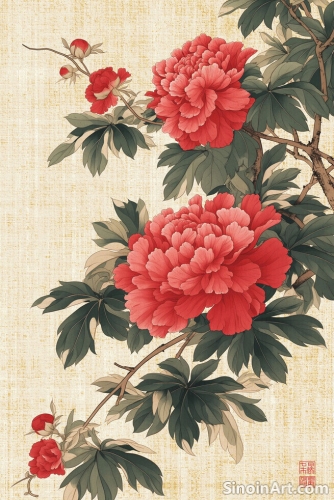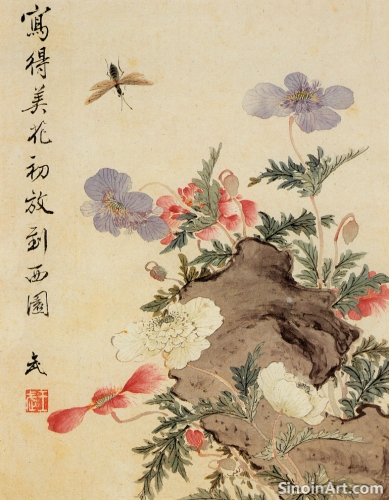The Use of Gilding and Metallic Pigments in Gongbi
|
Gilding and the use of metallic pigments are techniques often employed in Gongbi painting to add a sense of luxury, opulence, and spiritual significance. These elements, carefully applied, create a luminous quality and enhance the visual impact of the artwork. These embellishments help to elevate the impact of the works beyond just a simple painting.  Gilding, which involves the application of gold leaf to the surface of the painting, is often used to highlight specific details or create intricate patterns. The radiant quality of gold creates a sense of richness and visual contrast, enhancing the spiritual and symbolic nature of the subject. The use of gold leaf adds both a visual and symbolic element to the works.  The use of metallic pigments, such as silver or bronze, also adds a reflective and luminous quality to Gongbi paintings. These pigments are often used to depict clothing, armor, or architectural details, adding a sense of depth and realism. The use of metallic pigments transforms flat surfaces into dimensional and reflective objects.  The application of gilding and metallic pigments requires a high degree of skill and precision. The artists must carefully prepare the surface and apply these elements evenly to create a smooth and consistent finish. This process is both delicate and time-consuming and requires the artist to master yet another technique. Beyond their aesthetic value, gilding and metallic pigments often carry symbolic meanings, often associated with divinity, wealth, and status. The use of these embellishments not only enhances the visual impact but also enriches the spiritual and cultural meaning of the artwork. The use of these pigments adds both beauty and symbolism. The use of gilding and metallic pigments demonstrates the artist's mastery of traditional techniques and their understanding of the cultural and symbolic language of Gongbi painting. These embellishments elevate the work beyond a simple painting and into a more meaningful cultural expression. |
Tag : Gilding in art, metallic pigments, Gongbi techniques, gold leaf painting, Chinese art embellishments
Related information
- Gongbi Painting in Modern Times: A Contemporary Renaissance
- The Gongbi Line: A Foundation of Precision and Expressiveness
- The Future of Gongbi: Digital Tools and Traditional Techniques
- Gongbi and the Use of Stippling and Pointillism Techniques
- The Evolution of Gongbi Subject Matter: From Tradition to Contemporary
This article explores the contemporary renaissance of Gongbi painting, highlighting the incorporation of modern themes, new techniques, digital technologies, and globalization in the evolution of the art form.
Gongbi lines are characterized by their fineness, evenness, and consistent width. Artists utilize specialized fine-pointed brushes to create these lines, ensuring that every stroke is deliberate and controlled. The consistent thickness of the lines requires years of practice, and this skill is central to the Gongbi style. It is within the precise lines that the work begins to define itself.
This article explores the future of Gongbi painting, highlighting the use of digital tools to aid in the creative process, facilitate sharing, and expand the art form’s reach, while emphasizing the importance of maintaining traditional techniques.
This article explores the use of stippling and pointillism techniques in Gongbi painting, highlighting how the careful application of dots or points of color creates unique textures, visual effects, and expands the range of expression within this traditional art form.
This article explores the evolution of Gongbi subject matter, from traditional depictions of court life and nature to the incorporation of contemporary themes and social commentary, highlighting how the art form continues to adapt and expand.